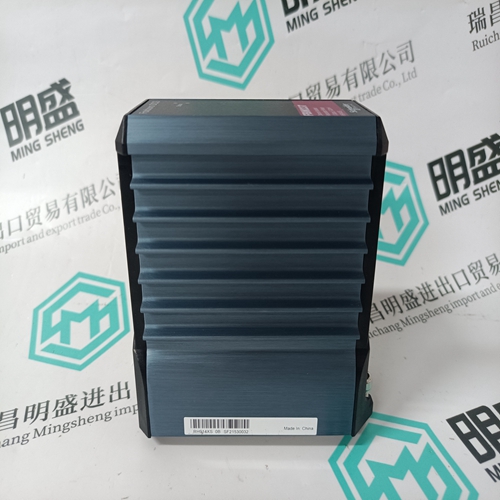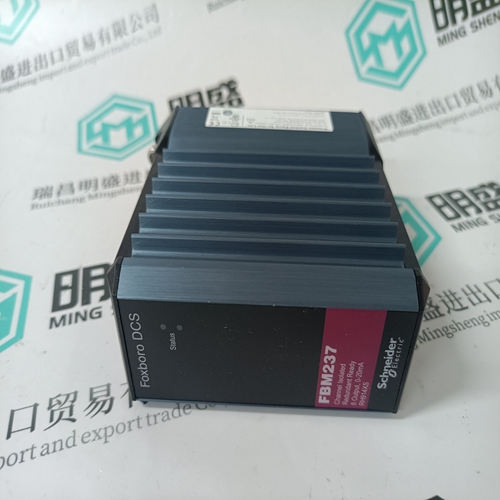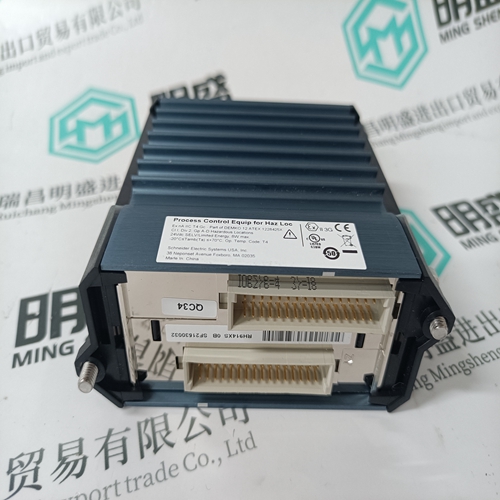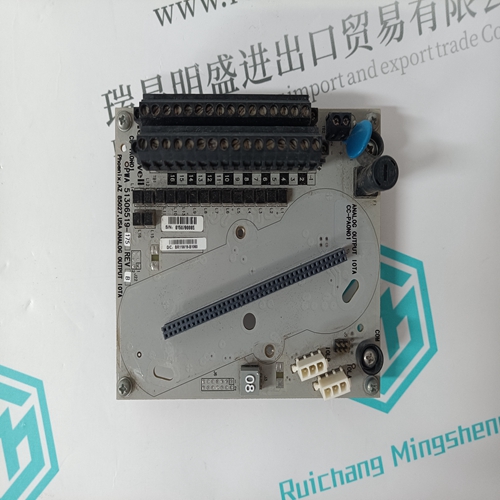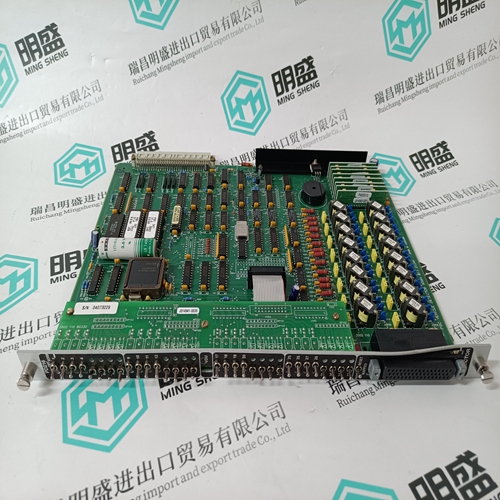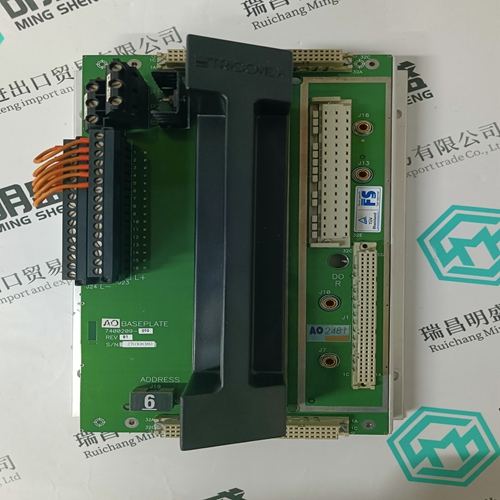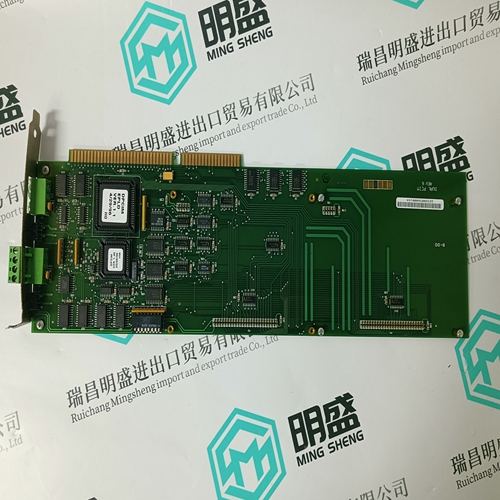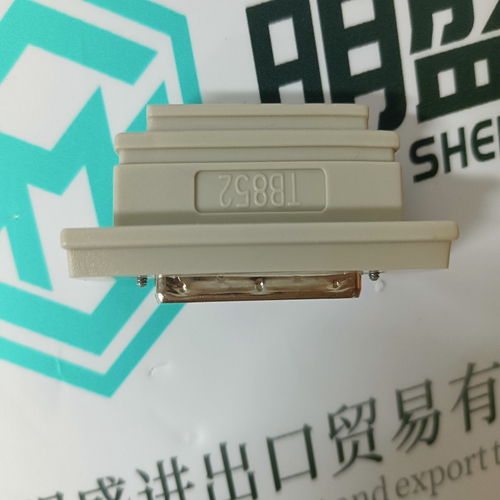Home > Product > DCS control system > FBM237 RH914XS Digital module
FBM237 RH914XS Digital module
- Product ID: FBM237 RH914XS
- Brand: FOXBORO
- Place of origin: The United States
- Goods status: new/used
- Delivery date: stock
- The quality assurance period: 365 days
- Phone/WhatsApp/WeChat:+86 15270269218
- Email:stodcdcs@gmail.com
- Tags:FBM237 RH914XSDigital module
- Get the latest price:Click to consult
The main products
Spare parts spare parts, the DCS control system of PLC system and the robot system spare parts,
Brand advantage: Allen Bradley, BentlyNevada, ABB, Emerson Ovation, Honeywell DCS, Rockwell ICS Triplex, FOXBORO, Schneider PLC, GE Fanuc, Motorola, HIMA, TRICONEX, Prosoft etc. Various kinds of imported industrial parts
Products are widely used in metallurgy, petroleum, glass, aluminum manufacturing, petrochemical industry, coal mine, papermaking, printing, textile printing and dyeing, machinery, electronics, automobile manufacturing, tobacco, plastics machinery, electric power, water conservancy, water treatment/environmental protection, municipal engineering, boiler heating, energy, power transmission and distribution and so on.
FBM237 RH914XS Digital module
The HAS-111DG measures the busbar and generator voltages in order to obtain data on frequency, phase and voltage deviation. A synchronising signal is transmitted when the following conditions are fulfilled: 1. The voltage difference is within ±2 to ±12 % of the busbar voltage set on the VOLTAGE potentiometer, and 2. the frequency difference ∆f is within -1 to 0 Hz and 0 to 1 Hz of the values set on the FREQUENCY potentiometers, and 3. the phase angle difference is within -25 to -5 ° el. and 5 to 25 ° el. of the value set on the PHASE potentiometers, and 4. the ∆f allows a synchronisation pulse of min. 100 ms without exceeding the setting of the PHASE potentiometers. When the above four conditions are fulfilled, a synchronising signal is transmitted and the yellow SYNC LED is lit. The pulse length (100 ms to 3 s) depends on the other settings of the relay, but the signal continues as long as the above conditions are fulfilled, however max. 3 s (see option D).
Self-monitoring
The HAS-111DG is equipped with a self-monitoring function. The function supervises the built-in microcontroller and hereby verifies if the programme is running correctly. The green LED marked POWER is connected to this function. Constant green light indicates that the supply voltage is accepted and the unit is running correctly. Flashing green light 2-3 Hz indicates that the supply voltage is accepted but the unit is running incorrectly. In this situation, the status output terminals 17 and 18 are activated (open).
This output is intended for common control of the voltage of all the connected reactive power load sharing units type LSU-122DG in a generator island. If terminal 33 is connected to the common voltage line (US) on the LSU-122DGs, the HAS-111DG will regulate the voltage on the generator island, so it matches the voltage on the unit the island is about to be connected to.
May be connected to a potential-free N/O contact. When this contact is activated, the HAS-111DG will control the connected LSU-112/113/114DG unit(s) to control the generator island frequency towards the busbar frequency less 50 % of the setting of the negative FREQUENCY potentiometer. Vice versa, if the input is opened.
Data sheet
The HAS-111DG can be configured with the following options: Increased phase window, option A When implemented, the accept phase window can be adjusted in the range from -50 to -10 ° el. and 10 to 50 ° el. Dead bus, option B1 When B1 is implemented, the dead bus function enables the HAS-111DG to transmit a closing signal to the generator breaker when no busbar voltage is present. When the generator voltage is within the setting on the potentiometer marked VOLTAGE with nominal voltage as reference, and the busbar voltage is below 25 % of nominal voltage, the HAS-111DG will transmit a 200 ms closing signal to the breaker. If option D is enabled, the sync. signal will stay on as long as the conditions are OK (see option D). Dead bus, option B2 When B2 is implemented, the dead bus function enables the HAS-111DG to transmit a closing signal to the breaker when no busbar or no generator voltage is present. When the voltage is within 80 % of nominal voltage on the active side of the breaker and below 25 % of nominal voltage on the passive side of the breaker, a 200 ms closing signal is transmitted. If option D is enabled, the sync. signal will stay on as long as the conditions are OK (see option D).
Dead bus, option B3
When B3 is implemented, the function – in addition to the function described under B2 – also enables the HAS-111DG to transmit a closing signal to the breaker when no busbar and no generator voltage is present. When the voltage is below 25 % of nominal, a 200 ms closing signal is transmitted. If option D is enabled, the sync. signal will stay on as long as the conditions are OK (see option D).
